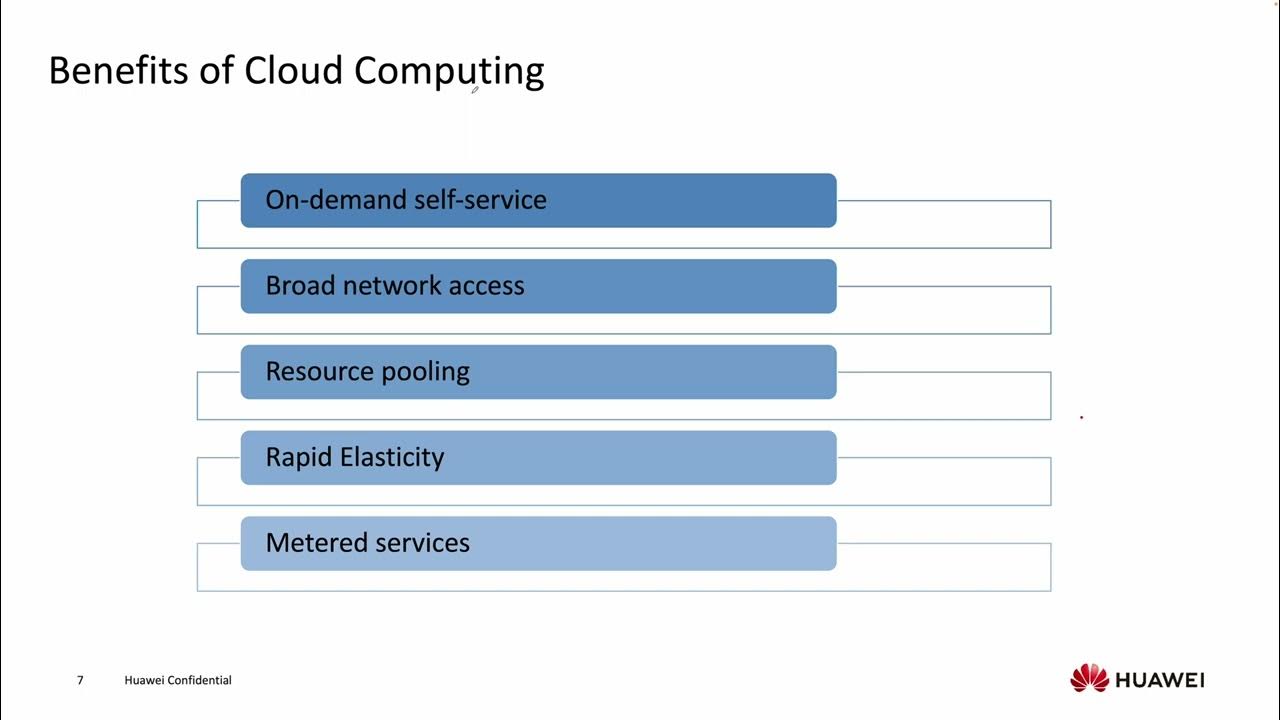What is Cloud Computing? | Amazon Web Services
Summary
TLDRCloud computing offers on-demand IT resources via the internet with flexible pricing, enabling businesses to access computing power, storage, and databases as needed. It enhances agility, reduces costs, and allows for instant scaling and global deployment. Organizations use it for varied applications like healthcare, finance, and gaming. Cloud computing facilitates innovation, rapid experimentation, and personalized customer experiences without large upfront investments.
Takeaways
- 💻 Cloud computing allows on-demand access to IT resources over the internet, eliminating the need for physical data centers and servers.
- 💲 Pay-as-you-go pricing means you only pay for the technology services you use, such as computing power, storage, and databases.
- 💵 Cloud services are used across various industries for diverse applications like data backup, disaster recovery, and software development.
- 💴 Healthcare, financial services, and gaming industries leverage the cloud for personalized treatments, real-time fraud detection, and global game delivery respectively.
- 💹 Cloud computing enhances business agility, reduces costs, and enables rapid scaling and global deployment.
- 💰 It provides instant access to a wide array of technologies, facilitating faster innovation and implementation of ideas.
- 💸 The cloud allows for the rapid deployment of technology services, significantly speeding up the process from concept to execution.
- 💷 You can experiment with and test new ideas in the cloud to differentiate customer experiences and transform business operations.
- 💶 There's no need for large upfront hardware investments; you can switch from capital expense to variable expense, paying only for consumed IT resources.
- 💳 Cloud resources can be scaled up or down in real-time to instantly adjust to changing business demands.
- 💱 Global expansion is simplified with cloud computing, allowing for rapid deployment across new regions and physical locations.
Q & A
What is cloud computing?
-Cloud computing is the on-demand delivery of IT resources via the internet, with pay-as-you-go pricing, allowing access to technology services such as computing power, storage, and databases on an as-needed basis from a cloud provider.
Why is cloud computing beneficial for businesses?
-Cloud computing allows businesses to become more agile, reduce costs, instantly scale, and deploy globally in minutes, providing access to a broad range of technologies for faster innovation.
What are some use cases for cloud computing mentioned in the script?
-The script mentions use cases such as data backup, disaster recovery, email, virtual desktops, software development and testing, big data analytics, and customer-facing web applications.
How does cloud computing help healthcare companies?
-Healthcare companies use the cloud to develop more personalized treatments for patients by leveraging its capabilities for data storage and processing.
What is an example of how financial services companies use cloud computing?
-Financial services companies use the cloud to power real-time fraud detection and prevention, taking advantage of its instant scalability and data processing capabilities.
How do video game makers benefit from cloud computing?
-Video game makers use the cloud to deliver online games to millions of players around the world, benefiting from its global reach and ability to handle large-scale user access.
What advantages does cloud computing offer in terms of resource management?
-Cloud computing allows businesses to trade capital expense for variable expense, only paying for IT as it is consumed, and provides the ability to scale resources up and down instantly as business needs change.
How does cloud computing facilitate global deployment?
-Cloud computing makes it easy to expand to new regions and deploy globally in minutes, as exemplified by Amazon Web Services' infrastructure all over the world.
What is the impact of cloud computing on application latency and user experience?
-By putting applications in closer proximity to end users, cloud computing reduces latency and improves user experience.
How does cloud computing free up businesses from managing infrastructure?
-Cloud computing allows businesses to focus on their core activities rather than managing infrastructure and data centers, as the cloud provider handles these aspects.
What kind of technological services can be deployed quickly with cloud computing?
-With cloud computing, businesses can quickly deploy technology services such as compute, storage, databases, internet of things, machine learning, data analytics, and more.
How does cloud computing support the addition of machine learning to applications?
-Cloud computing provides the infrastructure and services necessary to add machine learning and intelligence to applications, allowing for personalized customer experiences and improved engagement.
Outlines

Dieser Bereich ist nur für Premium-Benutzer verfügbar. Bitte führen Sie ein Upgrade durch, um auf diesen Abschnitt zuzugreifen.
Upgrade durchführenMindmap

Dieser Bereich ist nur für Premium-Benutzer verfügbar. Bitte führen Sie ein Upgrade durch, um auf diesen Abschnitt zuzugreifen.
Upgrade durchführenKeywords

Dieser Bereich ist nur für Premium-Benutzer verfügbar. Bitte führen Sie ein Upgrade durch, um auf diesen Abschnitt zuzugreifen.
Upgrade durchführenHighlights

Dieser Bereich ist nur für Premium-Benutzer verfügbar. Bitte führen Sie ein Upgrade durch, um auf diesen Abschnitt zuzugreifen.
Upgrade durchführenTranscripts

Dieser Bereich ist nur für Premium-Benutzer verfügbar. Bitte führen Sie ein Upgrade durch, um auf diesen Abschnitt zuzugreifen.
Upgrade durchführen5.0 / 5 (0 votes)






